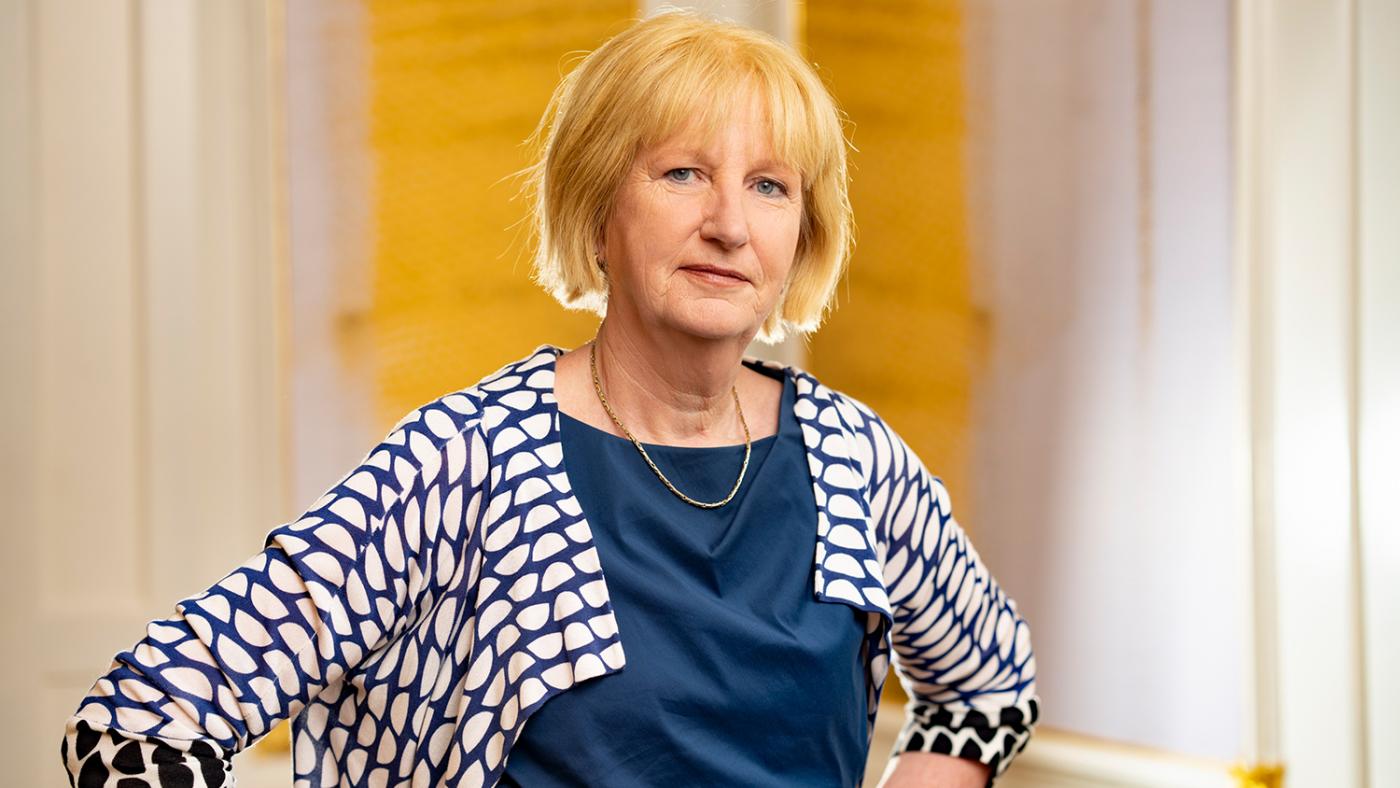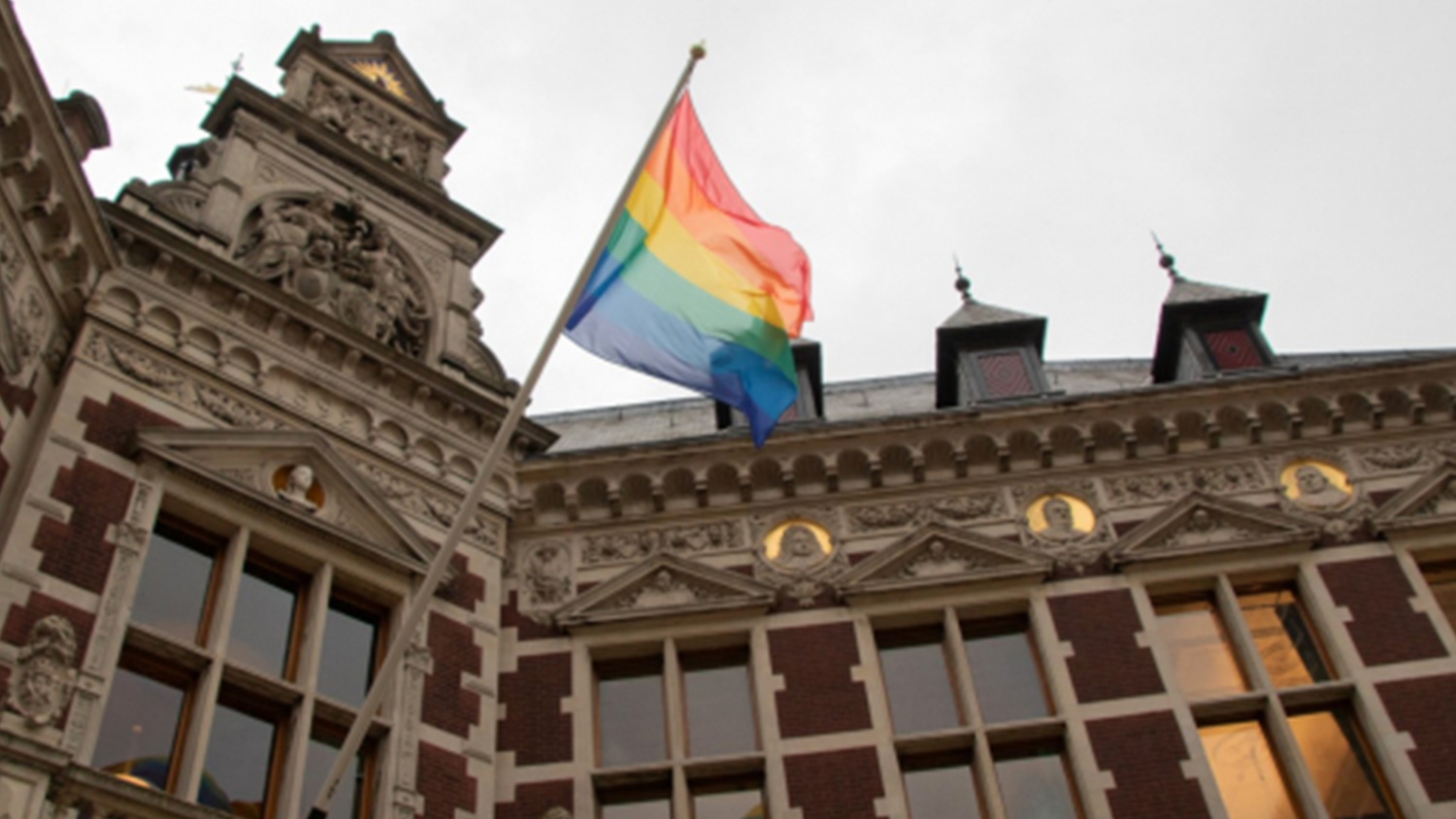‘It takes guts to talk about diversity,’ says Diversity Dean Janneke Plantenga

Increasing diversity within the UU population is one of the goals expressed in the University’s Strategic Plan 2012-2020. That’s because the Executive Board understands that the UU community should better reflect the society it serves, and that UU students will work within a much more diverse environment once they graduate. Furthermore, academic debate is said to be enriched by a diverse group of people with different experiences and ways of thinking. To attract more employees and students with diverse backgrounds, the university concluded that it should become more inclusive: everyone must feel welcome and at home at UU, regardless of age, gender, sexuality, able-bodiedness; cultural, ethnic, or religious background.
A few years ago, UU established the Taskforce Diversity & Inclusion, which aimed to put the intentions expressed in the Strategic Plan into practice. Now, there’s the ‘Equality, Diversity & Inclusion organisation’, led by a Diversity Dean who’s responsible for the UU’s diversity programme. The role is a new position within the UU and it’s held since September 1st by Janneke Plantenga, Professor of Economics of the Welfare State and Dean of the Faculty of Law.
Courageous conversations
Recently, Plantenga launched the strategy and action plan Equality, Diversity & Inclusion 2021-2025, a document outlining how Utrecht University is to increase equality, diversity and inclusion in the next four years. She is aware that four years aren’t nearly enough for such a cultural shift, and that heavy discussions await her. “But we need to get through that. You can only get closer to each other by starting a conversation and listening to each other.”
It’s clear that emotions are running high when we look at the discussions surrounding the women’s quota proposed by the University Council, or the racism debate organised in the light of the Black Lives Matter movement, not to mention the question whether UU is ‘too white’. It’s striking how many people say that they were treated unfairly in these discussions. How should the university handle this situation?
“I recently attended a seminar that delved into this type of discussion, which was referred to as courageous conversations. We really need to dare to have these conversations, show guts and courage, and keep talking to each other. It takes time to really learn to listen to each other. Free debate is important in a university, so there needs to be space for that, regardless of how difficult a discussion like that can be.” Additionally, it can take a long time before such debates are “leached out”, she says. “The discussion the importance of Women’s studies and gender bias in science started in the 1980s. That was really intense back then as well, and although it’s a little leached out by now, emotions still run high.”
A little nudge
Plantenga says that, to truly become diverse, it’s not enough to just talk over and over again about how everyone deserves equal opportunities: the university needs to have policy aimed at equality, diversity, and inclusion. “We know these things don’t happen spontaneously: some people need a little nudge. Everyone’s constantly busy and put efficient decision-making systems in place. Things are done through mental shortcuts that often lead to decisions that don’t serve diversity or inclusivity. I’m not disqualifying other people’s work, that’s just how the human brain works. But you can become more aware of this. During a recruitment process, for example, you can try letting some qualities weigh heavier than others in order to be more inclusive. This can result in having other applicants feeling discriminated against, because they think they don’t have as much chance. But the other party, the one you benefitted, may wonder if they got the job because of their qualifications, or because they check a diversity box. It’s an uncomfortable situation for both parties, but you do need to have the guts to talk about it with each other.”
Internationalisation can make the conversation about discrimination more difficult, because students and employees from other countries have different experiences and views about discrimination. “That’s a fair point. We want to be an international university, and foreigners come with their own experiences. With certain themes, they’re already at a more advanced point than we are, or the other way around. Still, here too, the only solution is to keep talking to each other, keep having those discussions. What you shouldn’t do is attack each other individually. You shouldn’t disqualify each other as equal conversation partners.”

Photo: Erik Kottier
Priorities 2021: influx, curriculum, cultural barometer
For the next four years, the EDI organisation has formulated eighteen action points, including participating in events like International Women’s Day, offering work experience opportunities to refugees, building connections with primary and secondary education, and setting up training sessions in which employees learn to find their blind spots, for instance in the process of recruiting staff or attracting students.
For 2021, there are three priorities on the programme. Firstly, the project that studies programmes’ influx and selection policy will be extended. The goal is to get a more diverse student population at the university, be it a better male/female ratio, or more students with a non-Dutch ethnic or cultural background. Are the selection criteria inclusive? The second priority is to take a look at the study material and the types of courses programmes offer. Do all students identify with the curriculum? Are all students able to come into their own? The third priority is that UU will join other universities in the Cultural Diversity Barometer set up by the Dutch government. This idea is to collect more data about employees with a migration background.
“The cultural barometer is conducted by Statistics Netherlands (CBS). They can connect several files to each other while respecting privacy, allowing us to get more insight into certain backgrounds. We don’t have an instrument like that at the moment. We want to be able to measure whether policies are successful, in order to adjust them if they’re not. We think the first barometer will be ready in one or two years,” Plantenga says.
Although the barometer can offer a lot of information, there are also diversity-related aspects that can’t be measured. For example, one can find whether someone’s parents were born abroad, but not where their grandparents were born. The sexuality of UUers can’t be found in the CBS statistics either, neither can characteristics like disability or chronic illnesses. “That’s true, but the data that are available will give us a foundation on which we can make and adjust policies. We know, for example, that an academic career can be more complicated for people from a migrant background. It’s important to have a clear picture of how this works at our university, which is why we’re participating in the cultural barometer. Data about other aspects like sexuality and disabilities could be collected through research of our own among our own employees and students.”
Show your inclusivity
Despite the lack of knowledge on the size of the LGBTQ+ community, it’s important to ensure that everyone feels at home at the UU. The most important thing is to show them that they can be themselves, Plantenga says. “We’re living in a time that’s less tolerant than the ‘80s. That’s why we fly the rainbow flag on Coming Out Day, to show that you are allowed to be who you are.” But a flag isn’t enough, of course. Plantenga states that, in order to make the atmosphere more inclusive, the university needs to show that everyone matters in different ways. “This can be done, for instance, by ensuring that all employees and students can identify with the speakers invited to academic celebrations or ceremonies, or with the people receiving honorary doctorates.”
Regarding disabilities, an institution can show its inclusivity when the disability does not form an obstacle in one’s studies or work, Plantenga says. “Although that’s a real challenge in the city centre, we want to make all buildings accessible to everyone, and adjust workplaces. The goal is for everyone to be able to work and study here. We need, for instance, to take into account that online education needs to be accessible for students with a visual disability, and that’s a challenge.”

The university has named five goals to help increase equality, diversity, and inclusion in the period 2021-2025.
-cIncreasing awareness;
- Supporting and promoting the vision that inclusion, equal opportunity, and diversity are central values at the university;
- Ensuring that students and employees with diverse backgrounds come to the university and feel welcome there;
- Encouraging an inclusive, open, and safe learning environment;
- Developing a robust, reliable monitoring system for the influx, throughput and outflow of students and employees.
The diversity group will focus on five ‘dimensions’: age, gender, disability, LGBTQ+ and cultural, ethnic, or religious background.
The ‘Equality, Diversity & Inclusion group’ consists of a steering committee in which the Corporate Office and all faculties are represented, plus two employees and two students. The steering committee is led by the Diversity Dean, and is supported by the so-called EDI office, which supports policy development and communication.
Equality, Diversity & Inclusion (EDI) has its own page on the Utrecht University website, where you can find EDI’s strategy and action plan, initiatives, and activities. One of the first activities was the first debate about the Black Lives Matter movement, organised in collaboration with University College Utrecht on October 12.
Photo header: Ivar Pel